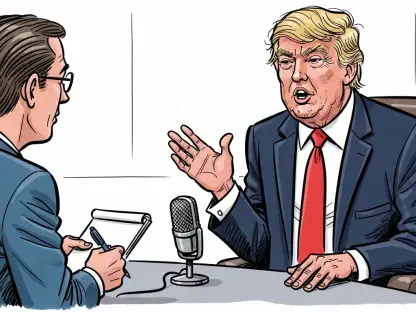Listen to the Article
Public-private partnerships involve cooperation between a government agency and a private business. They help fund, build, and manage projects like public transit systems, parks, and convention centers. These agreements can often help start and complete a project more quickly. Also, they frequently come with tax breaks, liability protection, or shared ownership of publicly owned services and properties, giving profit-driven companies certain rights. Here is a full breakdown of public-private joint ventures.
The Division of Duties in Public-Private Partnerships Projects
A municipal government may have a lot of debt and cannot take on a construction project that needs a lot of investment. In this case, a private company might offer to pay for the project in exchange for a share of the profits once it is complete.
In fact, cross-sector alliances usually last 20 to 30 years or more. Corporate stakeholders jump in to help with funding, but the public sector and users also need to make payments during the project’s life.
The for-profit entity handles the project’s design, execution, and financing, while the municipal agency focuses on setting goals and ensuring their fulfillment.
The Four Key Approaches to Cross-Sector Collaboration
Public-private partnerships can take different forms. Here are some examples:
Build Operate Transfer: The government hires a commercial partner to build and manage a project for a set number of years, often many decades. After this period, the regulating body takes back ownership.
Build Operate Own: This is similar to “Build Operate Transfer,” but the independent business does not have to give the project back to the government.
Design-build: A public institution contracts a for-profit entity to design and build a project for a fee. The government keeps ownership and can either manage the project directly or hire someone else to run it.
Buy Build Operate: The state sells an existing project that it has completed and operated. The private company takes full control and may need to invest in repairs or expansions.
Key Sectors for Public-Private Project Development
Public-private concession agreements often focus on transportation projects like highways, airports, railways, bridges, and tunnels. They can also involve municipal and environmental projects, including water and wastewater facilities. Because the state gets independent funding, municipalities can also support public services like school buildings, jails, student housing, and sports venues.
Public-Private Partnerships are most commonly used in building infrastructure, especially for toll roads and highways. A good example is Canada’s 407 Express Toll Route. This 67-mile highway was created through an intersectoral venture between the Ontario provincial administration and a private group. The corporate co-creator was responsible for designing, building, financing, and maintaining the highway for 99 years. During this time, they can charge road users tolls. However, the government did not promise to cover any specific traffic volume or toll revenues.
Risk, Revenue, and Responsibility in Joint Infrastructure Projects
Private businesses bring in new ideas and technology that can improve public services. On the other hand, the state encourages these firms to complete their projects on time and within budget. By investing in different sectors, the state/municipality can become more competitive. This strengthens infrastructure and supports related industries like construction, equipment, and services.
However, co-investment agreements carry risks both for the public and private sectors. The liabilities start at the negotiation phase, which depends on each side’s ability to evaluate and manage all the possibilities throughout the initiative.
The following are common challenges encountered in many such projects:
Site: Issues related to location, including accessibility, costs, and the time needed to secure necessary permits or rights of way, geological conditions, and environmental regulations, also play a role.
Design, Construction, and Commissioning: Delays or cost overruns during construction may occur. Poor design or construction quality can lead to an asset that doesn’t meet required standards.
Operation: Challenges related to service interruptions or asset availability. Network performance and operational costs may also deviate from initial expectations.
Demand and Revenue: The actual use of the service might fall short of forecasts, and revenue generation could be less than anticipated.
Regulatory or Political: Changes in regulations or political decisions can negatively impact the project, including delays in approvals, strict regulations, or even contract breaches.
Legal or Regulatory Changes: Alterations in laws, such as tax changes or shifts in currency rules, may have a detrimental effect.
Default: The private entity involved may face financial or technical difficulties that prevent completion.
Economic or Financial: Fluctuations in interest rates, exchange rates, or inflation can negatively impact the project.
Force Majeure: Unexpected events like natural disasters, war, or civil unrest can disrupt the project.
Asset Ownership: Risks related to the value of assets, such as outdated technology or lower-than-expected asset value at the end of the agreement.
Additionally, the commercial co-investor faces availability risk if it fails to provide the promised service. For example, a company running a prison, hospital, or school might not meet safety or quality standards.
Demand fluctuation occurs when the actual use of a service, such as toll roads or bridges, is lower than expected. However, the public stakeholders can share this volatility if they agree to pay a minimum fee regardless of the state of the market.
Public-private cooperation can also pose risks to the general public and taxpayers. When corporate partners work with the state, they might avoid accountability to the public for cutting corners, providing poor service, or violating civil rights.
Finally, when ownership and decision-making are split, cross-sector collaboration can create complex problems. Sometimes, corrupt practices creep in, political allies withstand kickbacks, and other unfair behaviors occur. It weakens the connection between the private parties making important decisions and the accountability they owe to taxpayers, who pay for the projects and may bear the consequences of the results.
The Bottom Line
Governments work with enterprises in shared investment models to fund projects. These partnerships have both benefits and drawbacks, but governments often rely on them to finance infrastructure like transportation, city services, environmental projects, and public service programs. The model works well when privately owned firms bring their innovative ideas and technologies to match public goals, helping complete projects on time and within budget.
However, commercial businesses take on risks, including higher costs, technical issues, and not meeting quality standards. Public organizations may also struggle when the expected fees for using these projects, like toll roads or bridges, do not match actual demand. Critics argue that these partnerships mix public needs with private profit motives, which can lead to exploitation, self-dealing, and rent-seeking behavior. It remains to be seen whether this model will continue to stand the test of time, evolve, or dissipate into something else.









